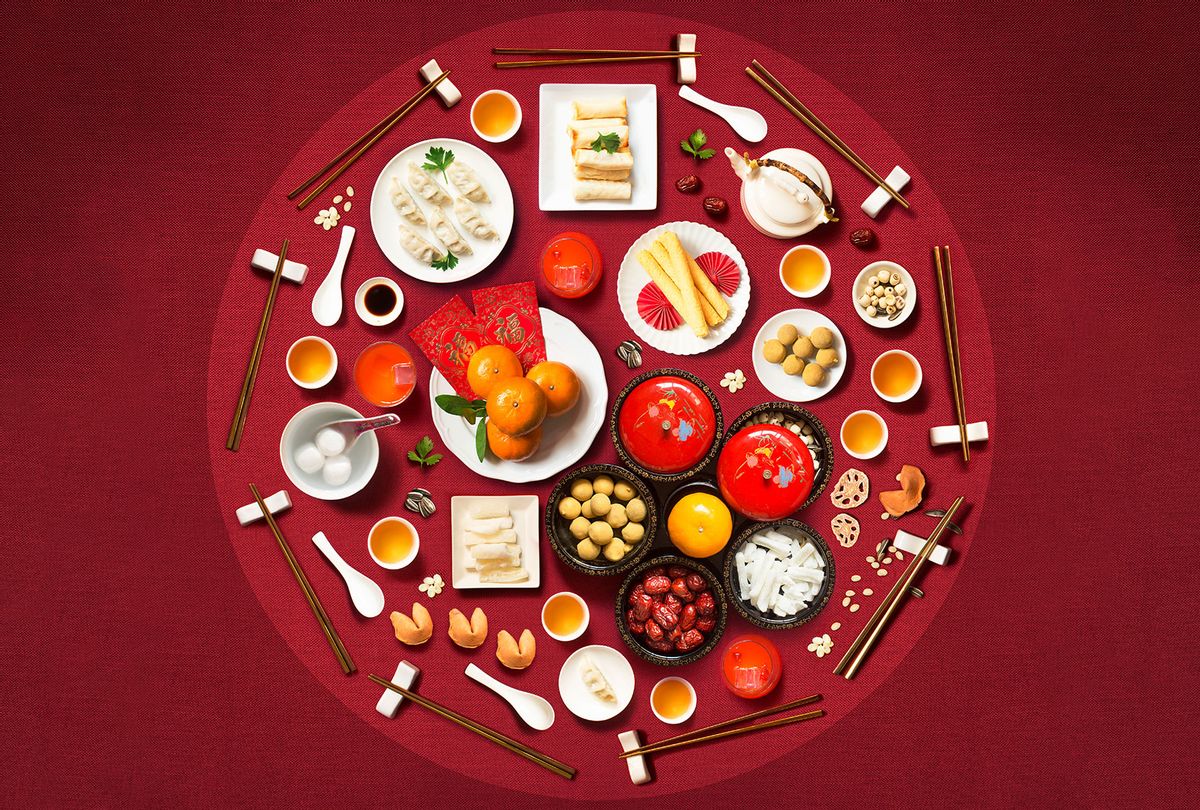Chef and TikTok sensation Vivian Aronson (Yuan Qian Yi 袁倩祎), who was born raised in Chendgu, China, knows that within the aisles of American Asian markets, there are ingredients that often serve as the the keys to making better, more authentic dishes. However, navigating these markets can come with a steep learning curve, especially for novices who may not know where to begin.
That's where her new cookbook comes into play. In "The Asian market Cookbook: How to Find Superior Ingredients to Elevate Your Asian Home Cooking," Aronson breaks down staple ingredients in Asian cuisine, while also providing recipes that are ideal for home cooks.
"When I shop at Asian markets in the West, shoppers always approach me and ask me which brand of an item they should buy," she writes in the introduction to the book. "There are so many different bottles of sauces and packages of noodles lining the shelves, so it can be daunting for someone who doesn't cook Chinese food frequently to navigate the aisles."
RELATED: Lunar New Year: A feast for the gods and family
She continues, "Have you ever thought about buying fermented tofu or Sichuan fermented broad bean chili paste? What about potato noodles or preserved mushroom stems? I will tell you what they are and how to cook them."
Aronson spoke with Salon about the differences between grocery shopping in China and America, what inspired her new cookbook and what will be on her dining room table for the Lunar New Year!
This interview has been lightly edited for clarity and length.
You talk about this some in the opening of your book, but how was grocery shopping in China when you were growing up different from how folks shop in American supermarkets?
Grocery shopping when I grew up in China was so different from how people shop in American supermarkets. There were only open-air farmer's markets, which sold fresh vegetables and meat directly from the farmers. All of the poultry and fish were alive, and the butcher would kill and clean it for you. The pork or beef butcher had pieces of meat hanging up, and they would cut a piece of your choice off and weigh it. Now, there are modern supermarkets in China, but the farmer's markets are still popular for fresh groceries.
What inspired you to tackle the topic of cooking through the lens of what's on the shelves at Asian markets?
Often, when I go shopping at an Asian market, someone asks my opinion on what to buy, such as what kind of noodles or which condiments. I also get many comments on my videos about what ingredients I use in the recipes and how to find them, so I figured this was a topic area that many people would be interested in. The cookbook will teach people how to shop those local markets to find the best ingredients for authentic Asian recipes.
Want more great food writing and recipes? Subscribe to Salon Food's newsletter.
One of the things people have talked about over the last few years amid the pandemic — and cooking from home way more than they used to — is the idea of "pantry staples," or items that can be used to toss together a quick meal at the end of a long day. What are some of yours?
My Chinese "pantry staples" are Sichuan chili broad bean paste, Chinese soy sauce, Chinese cooking wine, Chinese vinegar, Sichuan peppercorns and Sichuan chili peppers. I use them daily in my cooking. I am from the Sichuan province, and there are over 20 different kinds of flavors in Sichuan cuisine — basically combinations of sweet, salty, spicy, numbing, bitter and sour in different amounts. My pantry staples are the ones to make those authentic flavors.
I think sometimes "pantry staples" are different from ingredients for more celebratory meals. With the Lunar New Year upon us, what are some additional ingredients you would plan to have on hand — and what dish from your cookbook would you make with them?
For Lunar New Year, there are special dishes you must have at the dinner table, such as traditional Chinese dumplings, steamed or braised pork ribs, "Tian Shao Bai" (steamed pork belly with sticky rice). Also, a fish dish is a must have on the Lunar New Year table. The New Year's Eve dinner is the most important meal for families. There are usually 12 dishes for a table of 10 to 12 people.
The Sweet and Sour Pork Ribs (page 44), Steamed Whole Fish (page 63), Pork and Chive Dumplings (page 69), and Double Cooked Pork Belly (page 16) are all good for the Lunar New Year.
If you're interested in better navigating the aisles of your local Asian market, do consider buying Aronson's book "The Asian market Cookbook: How to Find Superior Ingredients to Elevate Your Asian Home Cooking."
Read more:
- How to make the stickiest sushi rice
- Kimchi jjigae is one of Beverly Kim's all-time favorite soups: It "hits the core of your soul"
- Acclaimed chef Brandon Jew: How did San Francisco's Chinatown succeed? Through the food
Salon Food writes about stuff we think you'll like. Salon has affiliate partnerships, so we may get a share of the revenue from your purchase.

Shares